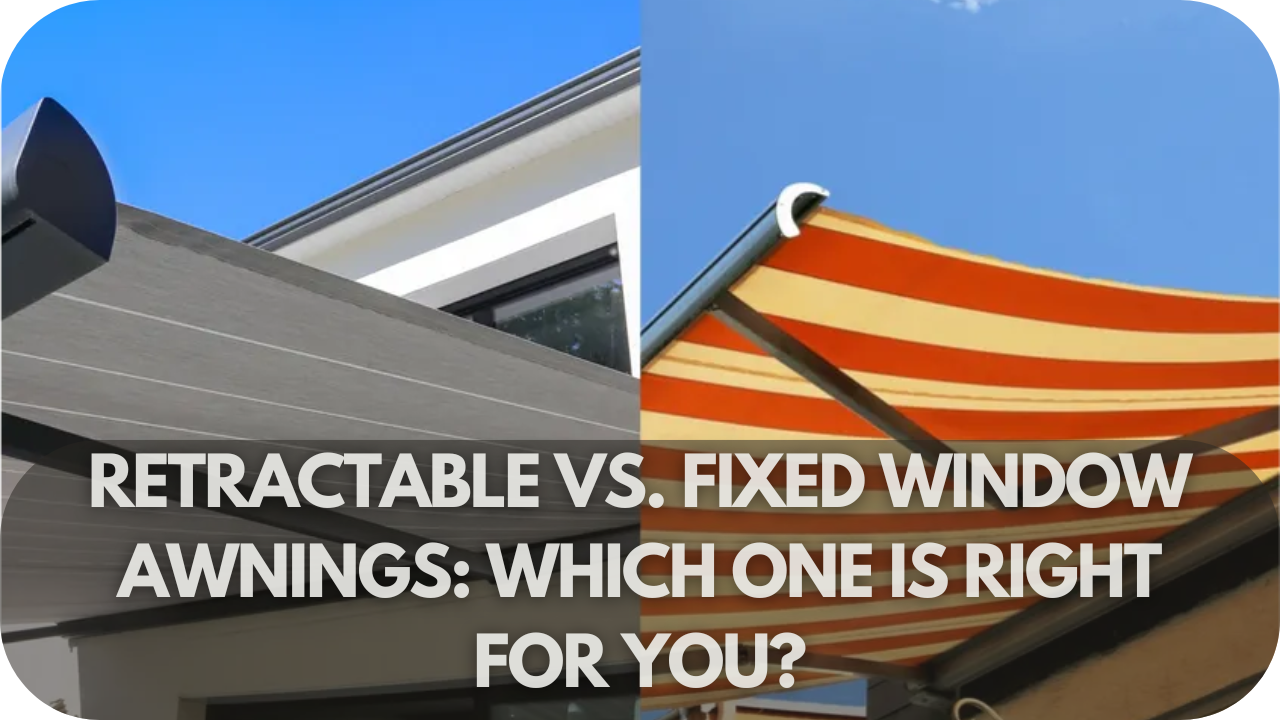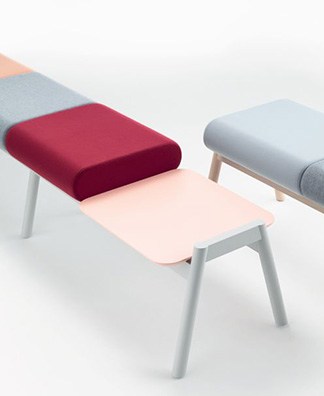Choosing between retractable and fixed window awnings? Both offer shade, style, and energy efficiency, but which suits your home best?
Do you need flexibility to adjust for changing weather, or a sturdy, low-maintenance option? Retractable awnings provide versatility, while fixed ones offer durability and all-year protection.
Factors like cost, aesthetics, and functionality are key in your decision. In this guide, we’ll compare the benefits of both types to help you find the perfect awning for your home.
Let’s dive in!
What Are Retractable Window Awnings?
Designed for flexibility, these awnings can be extended or retracted to provide shade and protect windows from harsh weather. They help regulate indoor temperatures, reduce glare, and enhance energy efficiency.
Operated manually with a crank or motorised for convenience, some models even feature sensors that adjust automatically based on wind and sunlight levels.
Made from durable, weather-resistant fabrics like acrylic or polyester, retractable awnings offer both functionality and style.
What Are Fixed Window Awnings?
Fixed window awnings are permanent shading structures attached to the exterior of a building. They provide continuous protection from harsh sunlight, rain, and other weather elements, reducing heat and glare indoors.
Unlike retractable options, they remain in place year-round, offering a low-maintenance solution for homes and businesses.
Constructed from durable materials like aluminium, steel, or weather-resistant fabric, fixed awnings enhance energy efficiency while adding aesthetic appeal. Available in various designs and styles, they complement different architectural looks.
Retractable vs. Fixed Window Awnings: A Detailed Comparison
Choosing between retractable and fixed awnings? Understand the key differences in functionality, durability, and cost to make the best choice for your home.
Flexibility & Convenience
For those who value adaptability, retractable awnings provide the perfect balance between shade and openness. They can be extended when you need sun protection and retracted for an unobstructed view. This feature is ideal for changing weather conditions and varying preferences.
Fixed awnings, while offering continuous coverage, lack adjustability. If you prefer a static solution that requires no operation, fixed awnings provide hassle-free protection. The right choice depends on your lifestyle—whether you need on-demand shade or a permanent, low-maintenance option.
Weather Resistance & Durability
Awnings face constant exposure to the elements, making durability a key factor. Fixed awnings, built with strong materials like aluminium and steel, provide lasting protection against wind and rain. Their sturdy design ensures reliability over time.
Retractable awnings offer flexibility but require regular maintenance to prevent wear. High-quality models use weather-resistant fabrics and durable frames, though they should be retracted in strong winds. Consider your needs to choose the perfect window awnings for your style and climate.
Energy Efficiency & Sun Protection
Awnings play a crucial role in controlling indoor temperatures and reducing energy costs. By blocking direct sunlight, they prevent excessive heat buildup, lowering air conditioning use and enhancing comfort.
Fixed awnings offer consistent sun protection, keeping interiors cooler throughout the year. Retractable awnings, however, provide the advantage of adjusting shade as needed—allowing warmth in winter and blocking heat in summer.
Aesthetic Appeal & Home Value
Awnings do more than provide shade—they enhance a property’s exterior appeal. Fixed awnings add architectural character with their structured designs, complementing both classic and modern homes.
Retractable awnings, on the other hand, offer a sleek, contemporary look with the ability to disappear when not in use. Both types can increase curb appeal and resale value, as buyers appreciate functional outdoor enhancements.
Cost & Maintenance
Budget considerations play a crucial role in choosing between retractable and fixed awnings. Fixed awnings are often more affordable upfront, as they require fewer mechanical components. They also demand minimal maintenance, making them a cost-effective long-term choice.
Retractable awnings, while initially more expensive, offer versatility and convenience. Motorised models, in particular, require occasional servicing to ensure smooth operation.
Suitability for Different Climates
Climate plays a significant role in determining the right awning type. Fixed awnings are ideal for areas with extreme weather, as they remain sturdy against wind, rain, and snow. However, they may trap heat in winter.
Retractable awnings are better suited for regions with variable weather, allowing homeowners to adjust shade levels accordingly. If your location experiences high winds, a fixed awning offers greater security.
Customisation Options & Design Variety
Awnings come in a wide range of designs, materials, and colours to suit different aesthetics. Fixed awnings offer various shapes, including dome, concave, and waterfall styles, complementing traditional and modern homes.
Retractable awnings, while typically sleek and minimalist, provide customisation through fabric choices, frame colours, and automation features. Motorised options even allow for integration with smart home systems.
Installation Process & Structural Requirements
The installation process varies significantly between fixed and retractable awnings. Fixed awnings are securely mounted, offering a hassle-free setup with lasting stability. They suit homeowners looking for a durable, low-maintenance option.
Retractable awnings require electrical wiring and structural reinforcement, especially for motorised models. Professional installation ensures smooth operation.
Understanding these factors helps maximise the benefits of installing window awnings, providing both style and functional shade for your home.
Longevity & Wear Over Time
Durability is essential when investing in an awning. Fixed awnings, made from metals like aluminium or steel, can last decades with minimal maintenance. Their rigid structure withstands harsh weather but may fade or collect debris over time.
Retractable awnings, particularly motorised ones, involve moving parts that may require occasional repairs. High-quality retractable fabrics resist UV damage, but improper use—such as leaving them open in strong winds—can shorten their lifespan.
Smart Home Integration & Automation
Technology has revolutionised awnings, making them more convenient than ever. Retractable awnings can now be motorised, controlled via remote, smartphone apps, or integrated into smart home systems.
Some models even include weather sensors that automatically retract during high winds. Fixed awnings, being stationary, lack automation but offer a reliable, no-maintenance solution.
Which One Is Right for You?
Choosing between retractable and fixed window awnings depends on your lifestyle, climate, and budget.
If you need flexibility, retractable awnings offer on-demand shade and the ability to retract for an open view. They are ideal for areas with changing weather and for those who value automation.
Fixed awnings, on the other hand, provide continuous protection, require minimal maintenance, and withstand harsh weather conditions. They suit homeowners looking for a durable, cost-effective shading solution with long-term reliability.
Consider your climate. If strong winds and heavy rain are common, a fixed awning is the safer choice. For adaptable sun control, a retractable model provides greater convenience.
Ultimately, the right option aligns with your needs, balancing functionality, durability, and design to enhance both comfort and home aesthetics.
Conclusion
Both retractable and fixed window awnings offer unique benefits. Retractable awnings provide flexibility, while fixed options ensure lasting protection. Your choice depends on your needs, climate, and budget. Think about what suits your home best and invest wisely.
For high-quality awning solutions, Into Blinds is a trusted provider offering durable and stylish options to suit any home. Ready to upgrade your outdoor space? Contact Into Blinds today for expert advice and premium awning solutions.


